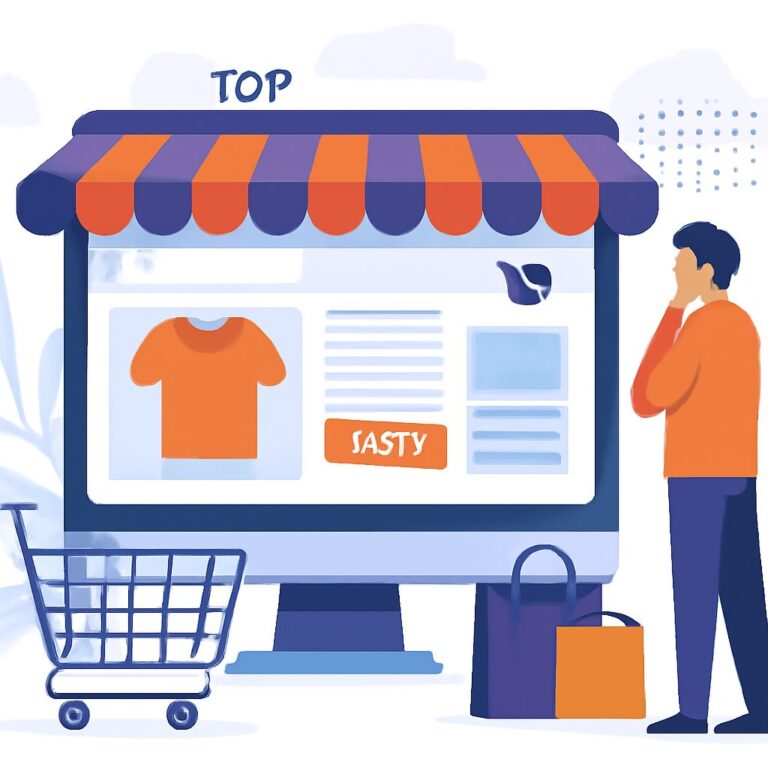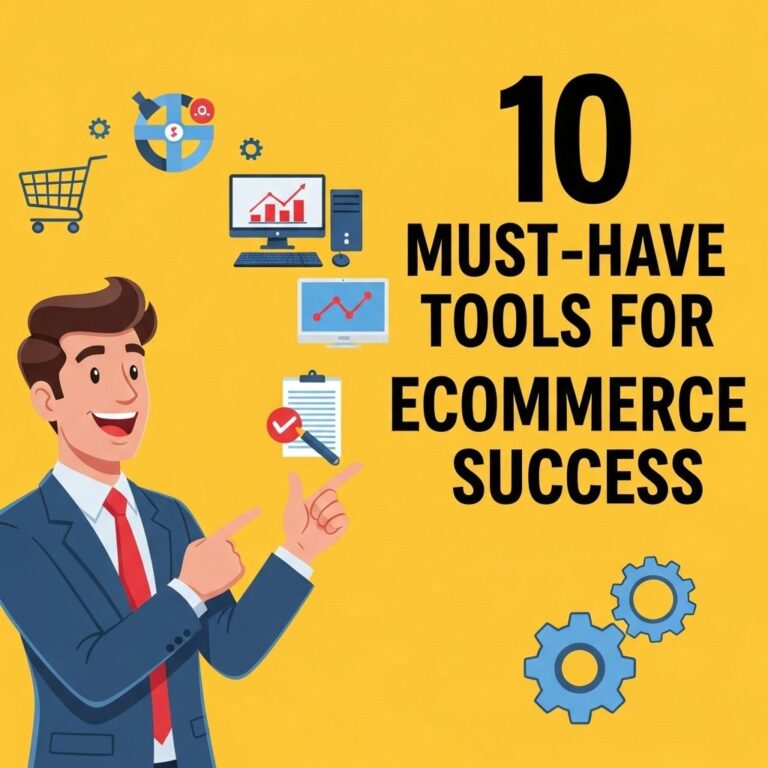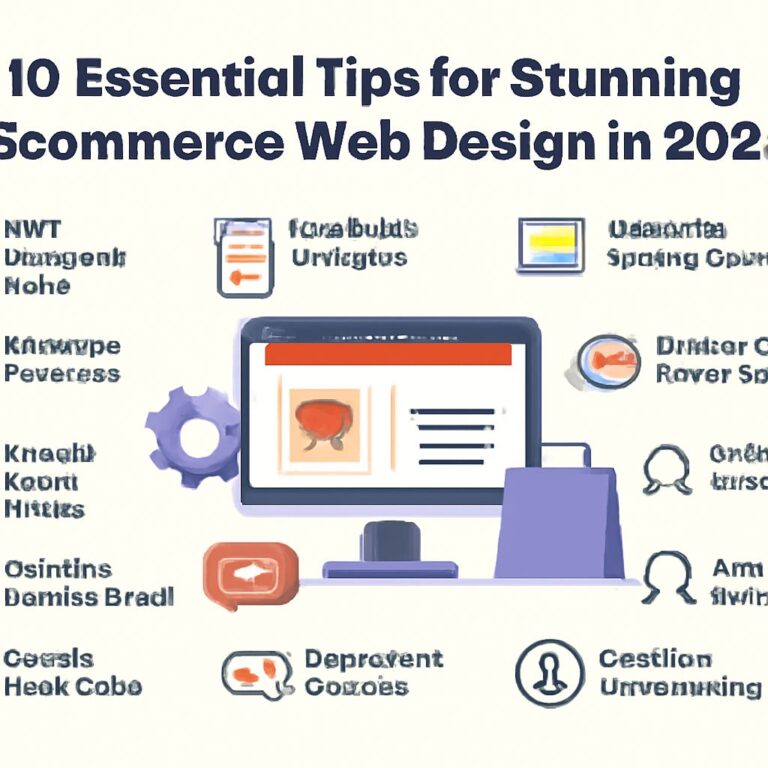In the rapidly evolving world of digital commerce, boosting sales requires more than simply having an online store. Modern eCommerce tools offer powerful features that can enhance customer experiences, optimize marketing strategies, and streamline operations. In this article, we’ll explore various tools and strategies that can help you drive sales effectively.
Table of Contents
Understanding eCommerce Tools
eCommerce tools encompass a broad range of software applications designed to help businesses manage their online sales operations. These tools can include everything from website builders to customer relationship management (CRM) systems. Here’s a look at the types of eCommerce tools available:
- Website Builders: Platforms like Shopify, WooCommerce, and BigCommerce that allow users to create and customize online stores.
- Payment Processors: Services such as PayPal, Stripe, and Square that facilitate transactions by securely processing payments.
- Marketing Automation Tools: Applications like Mailchimp, HubSpot, and Klaviyo that automate email marketing, social media posting, and customer segmentation.
- Analytics Tools: Google Analytics, Hotjar, and SEMrush provide insights into customer behavior, sales performance, and website traffic.
- Inventory Management Software: Tools such as TradeGecko and Cin7 help businesses keep track of stock levels and streamline order fulfillment.
Key Strategies for Boosting Sales
1. Optimize Your Website for Conversions
Your website is often the first point of contact between your brand and potential customers. Ensuring that your site is user-friendly and optimized for conversions is critical. Here are some tips:
- Responsive Design: Your site should be mobile-friendly to cater to users on different devices.
- Fast Loading Times: Aim for loading times under three seconds to prevent potential customers from leaving.
- Clear Call-to-Actions (CTAs): Use prominent buttons that guide users towards desired actions, such as ‘Buy Now’ or ‘Sign Up.’
2. Leverage Social Media Marketing
Social media platforms are significant drivers of online sales. Here’s how to effectively use them:
- Build a Brand Community: Engage with your audience by creating content that resonates with them.
- Use Paid Advertising: Invest in Facebook and Instagram ads targeting specific demographics to reach potential buyers.
- Influencer Collaborations: Partner with influencers in your niche to expand your reach and enhance credibility.
3. Implement SEO Strategies
Search engine optimization (SEO) is crucial for improving your online visibility. Consider these strategies:
| SEO Strategy | Description |
|---|---|
| Keyword Research | Identify and target keywords with high search volume relevant to your products. |
| On-Page Optimization | Optimize title tags, meta descriptions, and product descriptions for relevant keywords. |
| Content Marketing | Create valuable content that addresses customer pain points and establishes your brand as an authority. |
Utilizing Analytics for Better Decisions
Data-driven decisions are fundamental to business success. eCommerce analytics tools can provide insights into customer behavior, sales trends, and more. Here’s how to make the most of your analytics:
1. Track Customer Behavior
Use tools like Google Analytics to monitor user interactions on your site. Key metrics to focus on include:
- Bounce rate: The percentage of visitors who leave after viewing only one page.
- Conversion rate: The percentage of visitors who make a purchase.
- Average order value: The average amount spent per transaction.
2. Analyze Sales Performance
Keep track of which products are your best sellers and which are lagging. Use this information to:
- Adjust your marketing strategy to promote high-performing products.
- Consider discounts or bundled offers to move slower-selling items.
Enhancing Customer Experience
The customer experience directly impacts your sales. Tools that improve this experience can lead to increased customer loyalty and repeat purchases. Here are some ways to enhance the customer journey:
1. Chatbots and Live Chat
Implementing chatbots can improve customer support dramatically. Benefits include:
- 24/7 availability for answering customer queries.
- Instant responses that reduce wait times.
- Personalized shopping assistance based on user behavior.
2. Personalized Marketing
Use data from your analytics tools to personalize marketing efforts. Strategies include:
- Segmenting your email list for targeted campaigns.
- Offering personalized product recommendations based on browsing history.
- Implementing retargeting ads for users who visited your site without making a purchase.
Conclusion
Boosting sales in the eCommerce landscape requires a multifaceted approach that combines advanced tools, analytics, and customer-centric strategies. By leveraging technology and understanding customer needs, businesses can create compelling shopping experiences that drive conversions and foster brand loyalty. As you explore various eCommerce tools, remember that the ultimate goal is to enhance both your sales figures and the experience of your customers.
FAQ
What are the best ecommerce tools to boost sales?
Some of the best ecommerce tools to boost sales include email marketing platforms, social media management tools, SEO optimization tools, and analytics software that helps track customer behavior.
How can social media impact my ecommerce sales?
Social media can significantly impact ecommerce sales by increasing brand visibility, engaging customers through targeted ads, and driving traffic to your online store.
What role does SEO play in ecommerce sales?
SEO plays a crucial role in ecommerce sales by improving your website’s visibility on search engines, attracting organic traffic, and ultimately converting visitors into customers.
How can I use email marketing to increase ecommerce sales?
Email marketing can increase ecommerce sales by nurturing leads, promoting special offers, and sending personalized recommendations based on customer preferences.
What are some effective strategies for abandoned cart recovery?
Effective strategies for abandoned cart recovery include sending reminder emails, offering discounts, and simplifying the checkout process to encourage customers to complete their purchases.
How can customer reviews influence ecommerce sales?
Customer reviews can influence ecommerce sales by building trust, providing social proof, and increasing conversion rates as potential buyers rely on the experiences of others.







